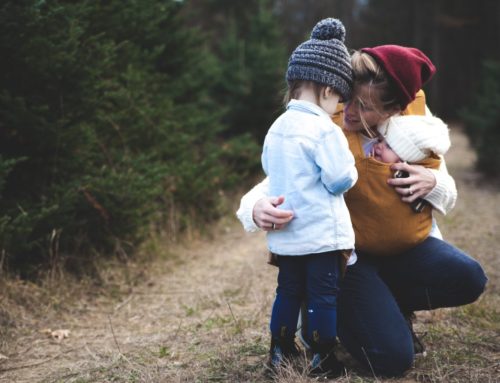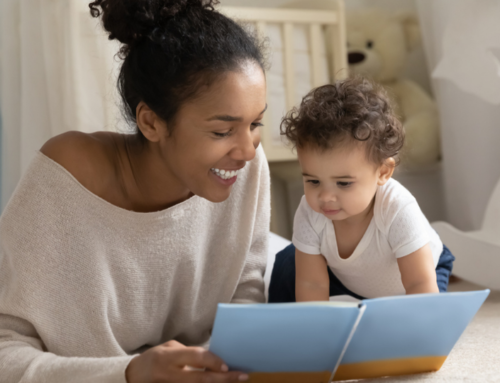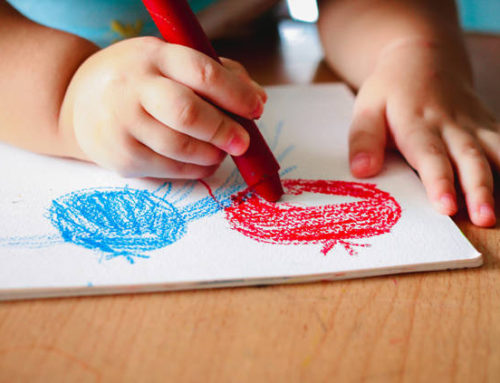Discipline with little ones
As an Occupational Therapist and a mum of several children I have learned some useful pointers for discipline:
Toddlers enter a developmental phase where they start to experience a desire for autonomy and mastery. It is really important that we take a step back as carers and acknowledge this desire for independence as healthy. Yes, it’s exasperating and tiring and it keeps you on your toes but a child who is not supported positively (for example whose behaviour is constantly labelled negatively or conversely the child does not experience positive boundaries) will feel shame, doubt and insecurity. There also needs to be consistency among caregivers, so parents please encourage your nanny’s input as well. Let’s look at a few principles:
Decide on ‘family rules’
Sometimes it can begin to feel like everything becomes a fight. As a start “no damage to self, property or others” is a good solid foundation to knowing when to discipline. Decide upfront what your response will be and stick to it. Sometimes younger little ones just need to be redirected or distracted, whereas older toddlers need to begin to respond to verbal commands.
Making choices
As parents it really is acceptable to be in charge; rather limit autonomy for little ones. When you need them to do something for you say ‘Let’s do …. ‘ rather than ‘Do you want to ….?’
It is not good for any one of us to get what we want all the time. We all need ‘yes’ on occasions, ‘no’ at others, and ‘wait, not for now’ at other times.
Offering an either/or choice
In order for children to develop mastery in the toddler years one can give them either/or choices when choosing a play activity. For example: “Do you want to paint with the red paint or green paint?”. When you can live with the result of the choice, it’s a good time to give a choice!
Respect for others’ property
If it is not a toy it is a ‘no’. Things like keys and remotes, glasses, phones and objects that the child cannot look after safely should not be given to a child. “No” is an acceptable answer, and nannies and others should have the liberty to say “That is my phone, ta, thank you”.
Little ones need to learn how to touch and handle the property of others with care, they learn this when adults play with them and demonstrate how.
This includes the toys of other children. It is perfectly fine to limit access to another child’s things if you know a little one hasn’t learned the self-control to play carefully. Your child should not be forced to share their special things with a visiting child who hasn’t yet learned how to handle them properly. Put the special things away, or close the bedroom door, and only offer some less special toys that are kept in a container for that purpose.
It’s also important to note that while we can model turn taking, expecting sharing from little ones without an emotional response is not developmentally appropriate. We love this quote by Shumaker (Explorations Early Learning) “keeping a toy when another child wants it is not the mark of a selfish child, but simply a busy one….Teach your child to say ‘I’m not done yet’. Interrupting play and instantly rewarding the other child does not benefit either child. Waiting for a turn teaches great lessons in delayed gratification. Young children aren’t ready to share; they are ready to take turns. Turn taking empowers kids and helps teach courtesy, awareness and spontaneous generosity.” It’s amazing how quickly they learn that waiting for two minutes is not that long!
Using the ABC-approach
(we use this in our Play Sense play groups – www.playsense.org)
A: Always acknowledge the intent behind the behaviour. For example:” I can see that you really want that toy and it’s hard to wait but in our family we take turns.” A toddler needs to be ‘seen’ and they need us to put words to their feelings. Be sure to get down to their level.
B: Boundary, for example “we take turns”.
C: Then give them a choice (that you can live with). “You can either wait two minutes to play or you can play with this car.”
Positive words for misbehaviour
When little ones do something like hit at or grab another child (or object) use positive words for what you want them to do rather than “no, stop it” or “don’t be naughty”. Give them the words for what you DO want them to do rather than negative words for example: “touch the plant softly”, “stroke his hair gently” or “give her the toy nicely”
Take their hand and help them through the motion of touching something or someone softly. For example: after pulling another child’s hair, open their hand, hold their palm open with your hand, and help them to stroke the child’s hair while saying “soft touch”.
I have mentioned that learning to accept “no” when wanting things that are not theirs, is a useful skill to help a child to learn. However avoid using the word “no” as a first option when dealing with challenging behaviours. You will find that they start using it back at you. “Uh oh” is a useful alternative and will help to avoid the toddler copying you and using the word “no” as a habit.
Being the example
Many times in the rush of things we unconsciously demonstrate bad behaviour to our little ones. It is a good idea to slow down and model good behaviour. For example, rather than grabbing something out of their hands ask them nicely for it and give them the experience of giving something willingly. This way they are less likely to snatch from others.
Sign language for early communication
From 8 months old it is very useful to teach little ones the sign language gestures for ‘please’, ‘thank you’, ‘more’ and ‘all done’ (no more). You help them to do the sign with their little hands at appropriate times, every time, and they will start using the signs from 9 months. There will be much less frustrated crying and screeching to get something they want, rather they will be able to make themselves understood.

Please
To sign please, take your hand with fingers extended and all together, and thumb extended and sticking out. Take the hand with palm facing in and rub it in a circle on your chest.
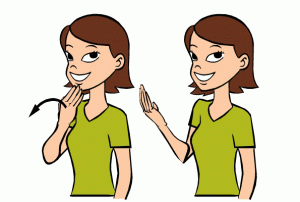
Thank you
To sign thank you, extend your fingers and thumb. Touch your fingers to your chin and bring your fingers forward. It is almost like you are blowing a kiss …
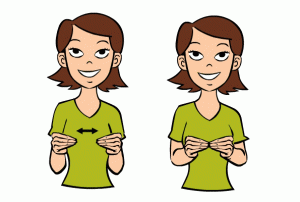
More
To do the sign for more, flatten out your hands then bring your thumbs under to make an O shape. Then, bring your hands together and separate them repeatedly.
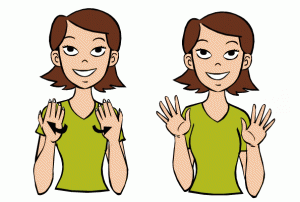
All done
To sign all done, you start with palms facing in, then turn the hands so that they are facing out
In closing I’d like you to try this exercise: picture yourself in a big house, where the sun is going down and you’re on your own for the night. You go and lock all the doors, have supper and get ready for bed. You feel a little anxious so what do you do? You check all the doors again. Our toddlers are constantly checking that the doors are locked with us, their parents. Pushing boundaries and seeing that they are ‘locked’ makes them feel safe; just as you would when your head hits the pillow and you say to yourself that you checked the doors. So be the parent. Don’t fear your child’s response to the boundary – know that you are making sure they feel secure in knowing they are safe. There is nothing more scary for a toddler than running a household.
Written by: Tracy-Jean Rossouw and Lara Schoenfeld
For more information on baby sign language, including the examples used in this article, go to https://www.babysignlanguage.com/?v=68caa8201064



